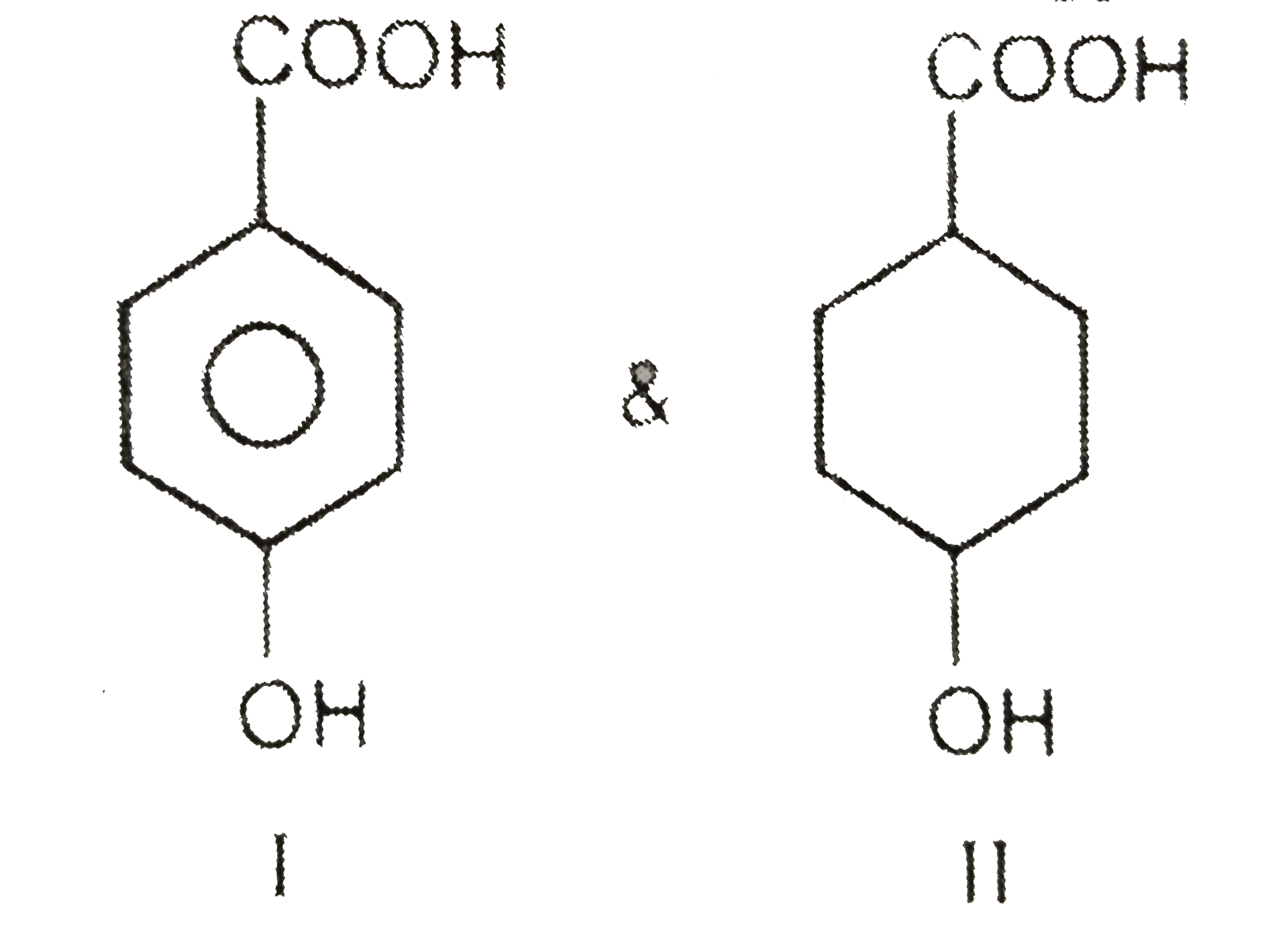You are provided with four reagents:
LiAIH4,I2/NaOH,NaHSO3 and Schiff's reagent.
Write which two reagents can be used to distinguish between the compounds in each of the following pairs:
CH3CHO and C6H5CHO
To distinguish between the compounds acetaldehyde (CH₃CHO) and benzaldehyde (C₆H₅CHO), we can use the following two reagents: I₂/NaOH (Iodoform test) and NaHSO₃ (Sodium bisulfite test). Here’s the step-by-step explanation of how each reagent works in distinguishing between the two aldehydes:
Step 1: Iodoform Test (I₂/NaOH)
1. Reagent: I₂/NaOH
2. Reaction: The Iodoform test is specific for compounds that have the methyl ketone structure (CH₃CO-). When acetaldehyde (CH₃CHO) is treated with iodine (I₂) in the presence of sodium hydroxide (NaOH), it forms iodoform (CHI₃) and sodium acetate (CH₃COONa).
3. Observation: A yellow precipitate of iodoform indicates the presence of acetaldehyde. In contrast, benzaldehyde (C₆H₅CHO) does not have the CH₃CO structure and will not give a positive iodoform test.
Step 2: Sodium Bisulfite Test (NaHSO₃)
1. Reagent: NaHSO₃
2. Reaction: Sodium bisulfite reacts with aldehydes to form bisulfite adducts. Acetaldehyde will react with NaHSO₃ to form a stable bisulfite adduct, while benzaldehyde will also react but the reaction is less favorable due to steric hindrance from the phenyl group.
3. Observation: The formation of a white crystalline precipitate with acetaldehyde indicates a positive test. The reaction with benzaldehyde is slower and may not yield a precipitate under the same conditions, thus allowing for differentiation.
Summary of Distinguishing Reagents
- Iodoform Test (I₂/NaOH): Positive for acetaldehyde (yellow precipitate), negative for benzaldehyde.
- Sodium Bisulfite Test (NaHSO₃): Faster reaction with acetaldehyde (white precipitate), slower or no precipitate with benzaldehyde.
1. Reagent: I₂/NaOH
2. Reaction: The Iodoform test is specific for compounds that have the methyl ketone structure (CH₃CO-). When acetaldehyde (CH₃CHO) is treated with iodine (I₂) in the presence of sodium hydroxide (NaOH), it forms iodoform (CHI₃) and sodium acetate (CH₃COONa).
3. Observation: A yellow precipitate of iodoform indicates the presence of acetaldehyde. In contrast, benzaldehyde (C₆H₅CHO) does not have the CH₃CO structure and will not give a positive iodoform test.
1. Reagent: NaHSO₃
2. Reaction: Sodium bisulfite reacts with aldehydes to form bisulfite adducts. Acetaldehyde will react with NaHSO₃ to form a stable bisulfite adduct, while benzaldehyde will also react but the reaction is less favorable due to steric hindrance from the phenyl group.
3. Observation: The formation of a white crystalline precipitate with acetaldehyde indicates a positive test. The reaction with benzaldehyde is slower and may not yield a precipitate under the same conditions, thus allowing for differentiation.
- Iodoform Test (I₂/NaOH): Positive for acetaldehyde (yellow precipitate), negative for benzaldehyde.
- Sodium Bisulfite Test (NaHSO₃): Faster reaction with acetaldehyde (white precipitate), slower or no precipitate with benzaldehyde.
Topper's Solved these Questions
- ALDEHYDES, KETONES AND CARBOXYLIC ACIDSBOOK - ICSECHAPTER - ALDEHYDES, KETONES AND CARBOXYLIC ACIDSEXERCISE - ISC EXAMINATION QUESTIONS (PART-I OBJECTIVE QUESTIONS) (FILL IN THE BLANKS)
27 Videos
- ALDEHYDES, KETONES AND CARBOXYLIC ACIDSBOOK - ICSECHAPTER - ALDEHYDES, KETONES AND CARBOXYLIC ACIDSEXERCISE - ISC EXAMINATION QUESTIONS (PART-I OBJECTIVE QUESTIONS) (MULTIPLE CHOICE QUESTION)
24 Videos
- ALDEHYDES, KETONES AND CARBOXYLIC ACIDSBOOK - ICSECHAPTER - ALDEHYDES, KETONES AND CARBOXYLIC ACIDSEXERCISE - EXERCISE (PART-II DESCRIPTIVE QUESTIONS) (VERY SHORT QUESTIONS)
282 Videos
- ALCOHOLS, PHENOLS AND ETHERS BOOK - ICSECHAPTER - ALCOHOLS, PHENOLS AND ETHERS EXERCISE - ISC EXAMINATION QUESTIONS
25 Videos
- APPENDIX II ( TYPICAL CONVERSIONS)BOOK - ICSECHAPTER - APPENDIX II ( TYPICAL CONVERSIONS)EXERCISE - AROMATIC CONVERSIONS
98 Videos
Similar Questions
You are provided with four reagents:
LiAIH4,I2/NaOH,NaHSO3 and Schiff's reagent.
Write which two reagents can be used to distinguish between the compounds in each of the following pairs:
CH3CHO and CH3COCH3
View SolutionYou are provided with four reagents:
LiAIH4,I2/NaOH,NaHSO3 and Schiff's reagent.
Write which two reagents can be used to distinguish between the compounds in each of the following pairs:
C6H5COCH3 and C6H5COC6H5
View SolutionWhich of the following reagents can be used to distinguish between SO2 and CO2?
View SolutionWhich of the following reagents can be used to distinguish between SO2andCO2?
View SolutionWhich of the following reagents can be used to distinguish between a sulphite and a sulphate in solution?
View SolutionWhich of the following reagent can distinguish the given compound I and II ?

View SolutionWhich of the following reagents can be used to distinguish primary amines from other compounds?
View SolutionDistinguish between the following :
(i) CH3−CO−CH2CH3 and CH3−CH2−CH2−CHO
View SolutionDistinction between pairs of compounds
Acetaldehyde (CH3CHO) and benzaldehyde (C6H5CHO).
View SolutionDistinction between pairs of compounds
Acetaldehyde (CH3CHO) and benzaldehyde (C6H5CHO).
View Solution
